Pippali Churna: Uses, Benefits, and How to Take It
Pippali, also known as Long Pepper, is a traditional spice and medicinal herb widely used in Ayurvedic medicine. Scientifically named Piper longum Linn., this plant is native to India and other parts of Southeast Asia. The fruit of Pippali is slender and resembles a small, elongated cone.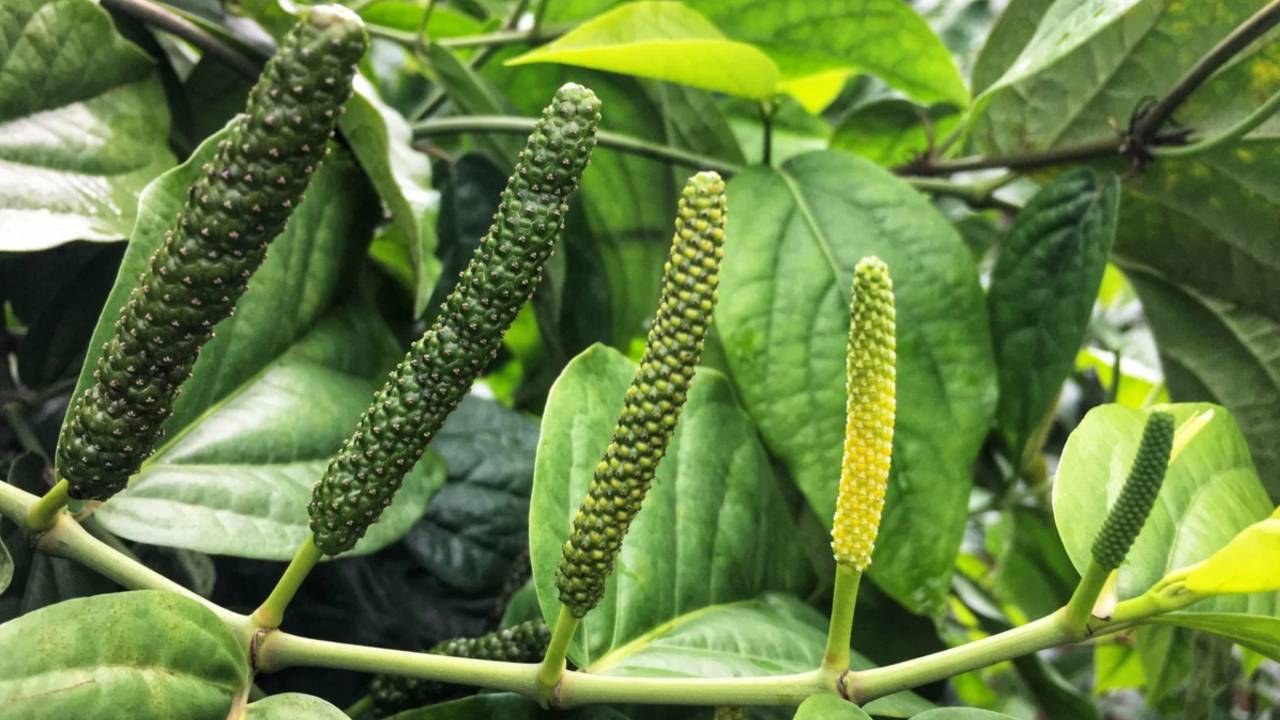
It is known for its pungent taste and mildly heating quality, making it less intense than black pepper but still aromatic and flavorful. In Ayurveda, unripe fruits are considered more potent and are often dried in the sun or shade before use.
Pippali is highly valued for its digestive, respiratory, and rejuvenating properties. It is a key ingredient in many classical Ayurvedic formulations, including Trikatu (a blend of Pippali, Black Pepper, and Ginger) and Chyawanprash.
In addition to the fruit, the root of the plant, known as Pippali Mula, is also used in traditional remedies, especially for respiratory issues and digestive health.
What is Pippali?
Pippali, also known as Long Pepper in English, is a distinctive spice with a pungent taste and mildly heating effect—not overly hot. It is scientifically known as Piper longum Linn. and is commonly referred to as Indian long pepper. The term “Pippali” refers to the unripe fruit, which is more potent and typically dried in the sun before use as a spice or seasoning. In Ayurveda, the root of the plant, called Pippali Mula, is also used for medicinal purposes.
What Does the Pippali Herb Look Like?
Pippali (Piper longum Linn.) is a slender, climbing shrub that creeps along the ground and roots at its nodes. Its young shoots are soft, and it produces unisexual flowers on straight spikes during or just after the rainy season.
- Leaves: Dark green, heart- or oval-shaped, about 2–3 inches long.
- Flowers: Male and female flowers grow on separate plants and appear during the rainy season.
- Spikes: Male spikes are slim and 2.5–7.5 cm long; female spikes are shorter, about 0.25–2 cm.
- Fruits: Ovoid, yellowish to orange, growing in early winter. Ripe spikes turn red and contain drupes about an inch in diameter.
Vernacular Names
- English name: Long Pepper
- Arabic name: Darfilfil
- Burma name: Peikchin, peikkhyen, pezinngoun
- Chinese name: Pipo
- French name: Poivre long
- German name: Langer Pfeffer
- Greek name: Peperi macron
- Italian name: Pepe lunga
- Java name: Chabijawa
- Mexican name: Teathancuaye
- Nepalese name: Pipal, popal
- Persian name: Filfildaraaz, filfildray, Maglizpipal, papal
- Santal name (Nepal): Ralli
- Sindh name (Pakistan): Filfidray, Tippali
- Sinhalese name (Sri Lanka): Tippili
- Spanish name: Pimentera larga
List of Indian Names of Pippali Plant
- Hindi name: Pipala, Pipal, Pipar, Pipli
- Kannada Name: Hippali, Hipli, Hippaliballi, kuna
- Telugu Name: Pippallu, Pippali, Modi
- Tamil name: Tippili, Argadi, Atti, Kalidi, Kalini, Kama tippili, etc.
- Bengali name: Pipal
- Malayalam name: Tippali, Chapala, kana, Kattutipali, Magadhi pippali, Tippali
- Punjabi name: Maghaun
- Bengal name: Piplamor, Piplamul, pipli, pipul
- Bombay name: Bangali pimpali, piplamul, pipli
- Gujarati name: Piper, pipli, Peepli
- Konkani name: Hipli
- Malay name: Pitroat
- Marathi name: Pimpli
- Urdu name: Pipul
- Oriya name: Baihehi kkrykola, Magodha, Pippoli.
- Deccan name: Pipplie, pipulmul
Varieties of Pippali
According to classical Ayurvedic texts like those of Charaka, Sushruta, and Vagbhata, there are two commonly known varieties of Pippali:
- Pippali (Chhoti Pippali) – Piper longum: This is the most widely used type, favored for its unique medicinal properties.
- Gaja Pippali (Badi Pippali) – Piper chaba: Though used medicinally, it is considered less potent than Chhoti Pippali.
Additionally, Raja Nighantu describes four distinct types of Pippali:
- Pippali (Piper longum Linn.) – Grown mainly in the Magadha region.
- Gaja Pippali (Piper chaba Hunter) – Found in Bengal, Assam, and eastern India; identified with the Chavika plant.
- Saimhali (Piper retrofractum Vahl) – Native to Sri Lanka and Singapore.
- Vana Pippali (Piper sylvaticum / Piper peepuloides Roxb.) – Found in forest regions of Bengal and Assam.
Pippali – History of Therapeutic Uses
Pippali has been used in India since the Vedic period, indicating its long-standing significance in traditional medicine and daily life. This ancient spice has been revered for over 2,000–3,000 years, making it one of the oldest known medicinal herbs in Indian culture.
References to Pippali are found in the Atharva Veda, where it is associated with Rasayana—the Ayurvedic science of longevity and rejuvenation. Its use has been recommended to promote vitality, immunity, and overall well-being.
In Ayurvedic classics, Pippali is also cited in Bhaishajya Kaala, which outlines the appropriate timing and context for administering herbs—especially in pediatrics (Bala Roga)—based on the patient’s condition, dosha, and other factors.
Pippali – In Hindu Mythology
In Hindu mythology, Pippali holds a divine origin. It is believed to have emerged during the Samudra Manthan (the churning of the cosmic ocean), alongside Amrit—the nectar of immortality. This symbolic origin emphasizes its status as a life-enhancing herb.
According to the Jaiminiya Brahmana, the sage Vasishtha consumed Pippali to gain health and wealth. Its use is also documented in the Kousika Dharmasutra, where Pippali, along with other herbs, was recommended for neonates (infants in the first 28 days) to rejuvenate and enhance intellectual power (Medhya).
These mythological and ritual references highlight Pippali’s deep roots in India’s spiritual, cultural, and medicinal traditions.
Ayurvedic Properties of Piper Longum
- Rasa (taste): Katu (pungent)
- Virya (action): Mildly heating not hot.
- Guna (quality): Laghu (strong), Teekshna (piercing)
- Vipaka (post-digestive effect): Madhura – Undergoes sweet taste conversion after digestion
- Veerya (action): Ushna – Hot potency. (Wet variety has cold potency)
- Effect on Tridosha: Balances Vata and Kapha Doshas and wet variety increase Kapha Dosha.
- Srota (channel): Circulatory, digestive, respiratory, reproductive.
- Dhatu (tissue): Plasma, blood, fat, nerve, reproductive.
Ayurvedic – Actions and Uses of Pippali
In Ayurveda, Pippali is known for its wide range of therapeutic actions. Its effects span from digestive health to rejuvenation and mental clarity:
- Amanashak – Destroys internal toxins (Ama), promoting overall detoxification.
- Bhedaniya – Acts as a gentle purgative, aiding in bowel cleansing.
- Chedana – Scrapes toxins from deep tissues, especially useful in chronic conditions.
- Deepana – Stimulates the Agni (digestive fire), improving appetite and digestion.
- Hikkanigrahan – Helps alleviate persistent hiccups.
- Jwarahara – Reduces fever and manages infectious conditions.
- Krimighna – Works as a vermifuge, eliminating intestinal parasites.
- Kushtaghna – Useful in managing various skin disorders.
- Medohara – Reduces excess fat tissue, supporting healthy metabolism.
- Medhya – Enhances memory, concentration, and overall cognitive function.
- Pachana – Helps in the digestion and elimination of undigested food and toxins.
- Rasayana – Acts as a rejuvenator, especially nourishing plasma (rasa), blood (rakta), fat (meda), and reproductive tissue (shukra).
- Shwasakasahara – Supports respiratory health and eases breathing difficulties.
- Shirovirechan – Clears toxins from the head and sinuses.
- Vrishya – Acts as an aphrodisiac, enhancing sexual vitality and fertility.
Top 10 Health Benefits of Long Pepper Powder
These are the top 10 health-boosting benefits of Long Pepper Powder (Pippali Churna) you should know.
1. Boosts Digestion
Pippali stimulates Agni (digestive fire), promoting better breakdown and assimilation of food. It helps alleviate symptoms like indigestion, flatulence, and bloating, especially after heavy meals.
2. Enhances Respiratory Health
It acts as an expectorant, helping clear mucus from the respiratory tract. Pippali is commonly used in herbal cough syrups and Ayurvedic remedies for asthma and bronchitis.
3. Improves Metabolism
By kindling internal heat, Pippali boosts metabolic rate and energy levels. It is especially helpful in cases of slow metabolism or obesity due to Kapha imbalance.
4. Supports Liver Function
Pippali aids liver detoxification and improves bile flow, essential for fat digestion. It helps rejuvenate liver cells and is often used in Ayurvedic liver tonics.
5. Strengthens Immunity
Rich in bioactive compounds, Pippali helps the body resist infections and diseases. It strengthens Ojas, the essence of immunity in Ayurveda, keeping you resilient and energized.
6. Regulates Blood Sugar
Pippali supports healthy glucose metabolism and may help reduce insulin resistance. Its regular use under guidance is considered beneficial for managing early-stage diabetes.
7. Enhances Reproductive Health
Pippali is a known aphrodisiac that helps improve libido and fertility. It also balances hormones and supports reproductive wellness in both men and women.
8. Promotes Longevity
Considered a rasayana (rejuvenator), it nourishes tissues and delays aging. Regular intake supports vitality, mental clarity, and sustained physical strength.
9. Relieves Joint Pain
Its anti-inflammatory and analgesic effects help reduce swelling and discomfort. Used in formulations for arthritis and joint degeneration, it soothes Vata-related pain.
10. Improves Appetite
Pippali naturally stimulates hunger by increasing digestive secretions. It’s often used in cases of anorexia, low appetite, or post-illness recovery.
How to use Pippali powder (Long Pepper)
Pippali is a powerful herb with a wide range of health benefits. The most common way to incorporate it into your routine is by using it as a daily spice or adding it to savory dishes.
However, it is often combined with other herbs for specific therapeutic effects. Below are some remedies using Pippali Churna for various health concerns:
1. For Seizures
- Mix equal parts of Pippali powder, Indian hemp (cannabis), and dry ginger. Take 2 grams of this mixture with honey twice a day, at least 30 minutes before meals.
2. For Coughs and Colds
- Combine 1/8 tsp. Pippali churna, 1/4 tsp. Ginger, and 1/4 tsp. Turmeric. Mix with 1/4 cup of warm water and add 1 tsp. honey. Drink in the morning after waking up and again between 2-4 p.m..
3. For Low Libido (Men)
- Mix 1/8 tsp. Pippali churna, 1 tsp. ghee, and 1/2 tsp. Ashwagandha powder in 1/4 cup warm water. Take this mixture three times daily before meals.
4. For Fever and Flu
- Brew 1 cup of ginger tea with Krishna Tulsi. Add 1/4 tsp. Pippali churna and 1 tsp. honey. Drink this three times daily during a fever or flu.
5. For Sciatica
- Take 1/2 tsp. Pippali powder and mix it with 2 tsp. castor oil. Consume this mixture regularly in the morning and evening to help relieve sciatica pain.
6. For Hemorrhoids
- Combine 1/4 tsp. Pippali churna with 1/2 cup homemade yogurt. Take this daily after breakfast and dinner.
7. For Delivery Pains
- Boil 3 grams of Pippali powder and 3 grams of Cassia Aleta (lotus) in 400 grams of water until it reduces to 100 grams. Filter and mix with honey or asafoetida. This remedy is recommended for pregnant women experiencing labor pains.
8. For Clear Skin
- Mix 1/8 tsp. Pippali churna, 2 tbsp. organic aloe vera juice, and 1/4 tsp. Turmeric in 1/2 cup warm water. Drink this three times daily during meals for clearer skin.
9. For Low Libido (Women)
- Combine 1/8 tsp. Pippali churna, 1/2 tsp. Shatavari, and 1 tsp. Ghee in 1/4 cup warm water. Take this mixture three times daily before meals to boost libido.
10. For Menstrual Disorders
- Mix 1/8 tsp. Pippali churna with 2 tbsp. organic aloe vera juice in 1/2 cup warm water. Take this three times daily before meals to help regulate menstrual cycles.
These remedies offer a variety of ways to incorporate Pippali Churna into your wellness routine. Always consult with a healthcare provider before starting any new herbal regimen, especially for specific conditions or in pregnancy.
Side Effects of Long Pepper (Pippali)
While Pippali (Long Pepper) offers numerous health benefits, it’s important to use it with caution, especially in certain conditions:
- Drug Interactions: If you are taking medications like phenytoin, propranolol, or theophylline, consult your doctor before using Pippali, as it may interact with these drugs.
- Intestinal Issues: Due to its hot potency, excessive or prolonged use of Pippali can cause intestinal inflammation or excessive heat in the body.
- Imbalance of Doshas: Pippali can decrease Vata and Kapha, while increasing Pitta. Therefore, those with a Pitta Prakriti (Pitta-dominant constitution) should use it cautiously.
- Inflammation: People experiencing body-wide inflammation should avoid using Pippali, as it may aggravate the condition.
- Excessive Use: Overuse can lead to a burning sensation and imbalance in all Doshas, potentially causing discomfort and health issues.
- Long-Term Use: It should not be used continuously over long periods of time without the guidance of an Ayurvedic practitioner, particularly without undergoing Panchakarma (detoxification) or Rasayana (rejuvenation) procedures.
FAQ’s
1. What is the use of Pippali Churna?
Pippali Churna is used in Ayurveda to support respiratory health, improve digestion, boost metabolism, and enhance immunity.
2. Which churna is best for a dry cough?
Pippali Churna is highly recommended for dry cough due to its expectorant and soothing properties.
3. How much Pippali powder should be taken per day?
The typical dosage is 1–2 grams per day, usually taken with honey or warm water. Always consult an Ayurvedic practitioner for personalized guidance.
4. How to use Pippali for cough?
Mix 1/2 teaspoon of Pippali Churna with honey and take it twice daily to relieve cough symptoms.
5. What are the side effects of Pippali?
In excessive doses, Pippali may cause acidity, burning sensation, or worsen certain conditions like ulcers. Use with caution and under supervision.
6. Is Pippali and Thippili the same?
Yes, Pippali (Sanskrit) and Thippili (Tamil) refer to the same herb—Long Pepper (Piper longum).
7. Is Pippali good for the kidneys?
Pippali is considered beneficial for detoxification, but individuals with kidney issues should consult a doctor before use.
8. How to use Pippali for digestion?
Take a small dose (around 1 gram) with warm water after meals to stimulate digestive enzymes and reduce bloating.
9. Is Pippali good for the liver?
Yes, Pippali is known to support liver function and help in detoxification when used appropriately.
10. Does Triphala cause constipation?
No, Triphala typically relieves constipation. However, if overused or if your body is sensitive, it might have the opposite effect.
11. How to take Pippali for weight loss?
Take a pinch of Pippali powder with warm water or honey before meals to boost metabolism and aid fat burning.
12. Why should Pippali not be used in excess?
Overuse can lead to gastrointestinal discomfort, increased body heat, and may aggravate Pitta dosha. Moderation is key.
Pippali Churna, or long pepper powder, is a treasured herb in Ayurveda with a wide range of health benefits—from improving digestion and boosting immunity to relieving cough and supporting weight management.
References
- A clinical trial of Pippali (Piper longum Linn.) with special reference to Abheshaja(1)
- Pharmacognostical and phytochemical analysis of Pippali (Piper longum Linn.)(2)
- Anti-inflammatory activity of two varieties of Pippali (Piper longum Linn.)(3)
- THERAPEUTIC USES OF PIPPALI [PIPER LONGUM LINN.] IN ANCIENT LITERATURE(4)


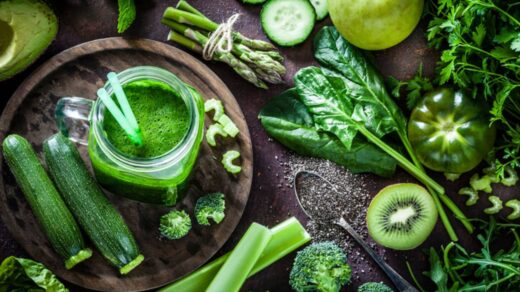

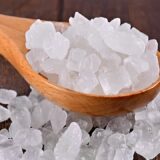





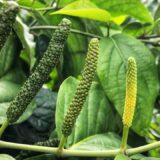









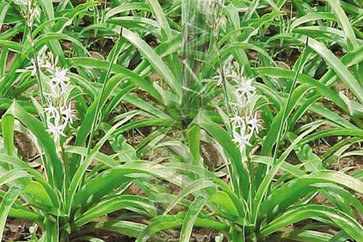





Recommended Dosage of Pippali
Pippali Churna – 4-8 pinch twice a day
Pippali Capsule – 1-2 capsules twice a day
Pippali Tablet – 1-2 tablets twice a day